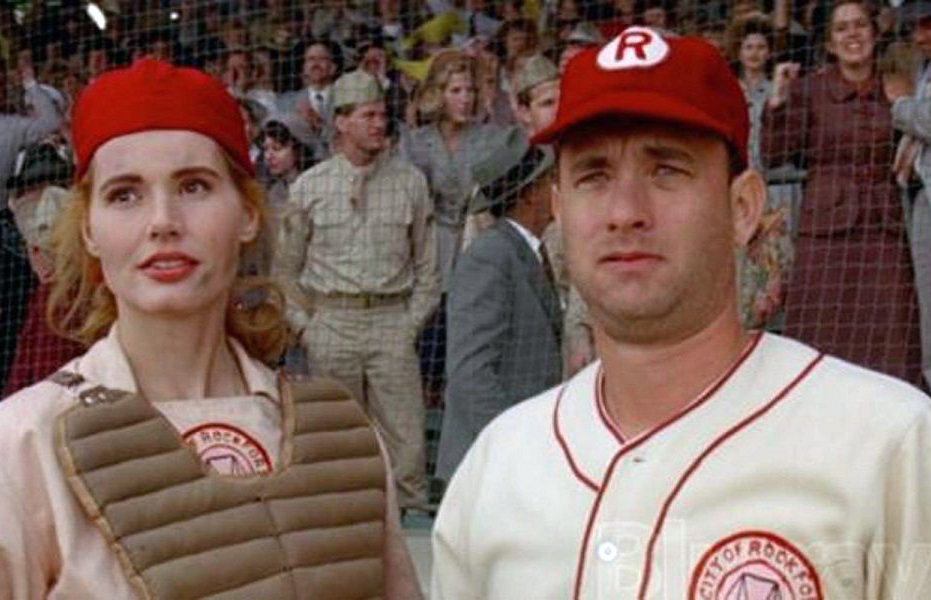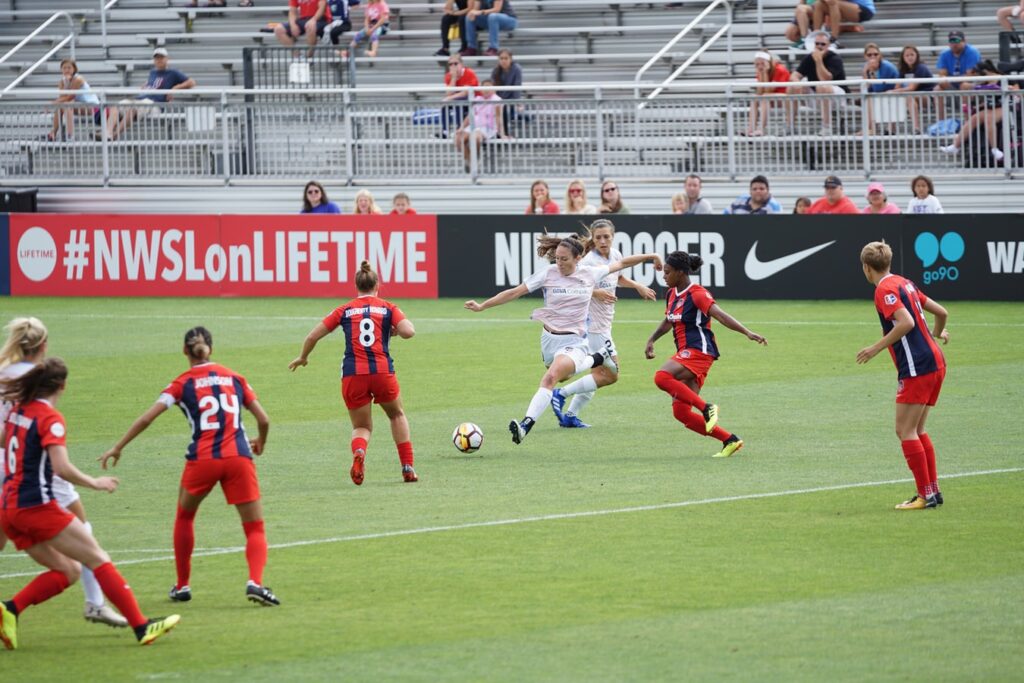When you think about some of the best sports movies of all time, what comes to mind? Maybe “Rocky”is the first thing to pop into your head? Or, what about “Rudy,” “Field of Dreams,” “Hoosiers,” or even “The Mighty Ducks?”
There have been hundreds of sports movies made over the years—some were inspired by true stories, like “Race,” while others were created to be inspirational themselves.
But when you think about how sports are depicted in movies, it’s hard not to notice the differences between those that feature women (whether individually or on a team) and those that feature men.
So, just what are those differences? Are the depictions of men and women in sports accurate on the silver screen? Let’s take a closer look.
An Underdog Story

Everyone loves an underdog story, right? But what happens when all you appear to get is a plethora of underdog stories? That seems to be the common thread that ties most female-led sports movies together. Many classic films like “A League of Their Own” and even more recent offerings like 2006’s “She’s the Man” showcase the struggle women have to go through in order to compete in traditionally male sports. In fact, in “She’s the Man,” actually based on Shakespeare’s “Twelfth Night,” the main female character has to actually dress up like her twin brother in order to play on a soccer team.
There are two sides to whether or not these underdog tales are actually a good thing or a bad one. On one hand, some of these movies that show women participating in male-dominated sports can be inspiring for young girls who are interested in athletics.
On the other hand, by consistently showing women in sports movies as simply trying to push their way into men’s sports, the film industry is re-telling the same story over and over again without showing how things can change. Unfortunately, women’s sports do tend to be less popular than their male counterparts, and gender inequality remains a problem in most professional sports leagues with women’s sports receiving only about 4% of all sports media coverage.
Do Films Reflect Reality?

Some sports movies touch on darker subjects, like drug use. A strong example is 1995’s “The Basketball Diaries.” The film follows a talented young male basketball player who puts his future in jeopardy with opioid addiction. It’s only thanks to his neighbor, Reggie, that he is able to get proper counseling and medical therapy like Suboxone to help.
According to a study by Medical News Today, women outperform men by 30% due to the quick circulation of oxygen in the body. The hypothesis in this study argues that because of that oxygen circulation, women may be more naturally-athletic than men. Unfortunately, women aren’t immune to turning to drug use or performance-enhancers either, especially to prove their place in professional sports. One of the best examples of this in recent years is Marion Jones. Jones was a five-time Olympic medal winner who was stripped of her winnings when it was discovered that she had been taking performance enhancers during the Sydney Olympics.
Female athletes struggle with the same things as their male counterparts, but they also can perform just as well (if not better) in certain areas. So, why aren’t there as many female-driven sports movies?
A lot of it likely has to do with culture and stereotypes. The 2002 soccer film “Bend it Like Beckham“ takes on the challenges of not only being a woman in sports but being an Indian woman in a culture that doesn’t approve of such things. A BBC survey performed across 14 Indian states discovered that only 29% of the women in the culture played a sport, compared to 42% of men, and that most respondents found male sports to be more entertaining to watch.
…by consistently showing women in sports movies as simply trying to push their way into men’s sports, the film industry is re-telling the same story over and over again without showing how things can change.”
There is also the gender pay gap between men’s and women’s sports that isn’t often depicted in movies, but it’s just another factor that plays into male sports being more popular, and male sports movies being more popular. Male sports tend to make more money for professional leagues, so filmmakers can naturally assume that movies centered around men in sports will also bring in a lot of cash—and they usually do. Some of the highest-grossing sports movies of all time include:
- “Rocky”
- “Rocky III”
- “Rocky IV”
- “Jerry Maguire”
- “The Waterboy”
While some female-led films like “A League of Their Own” and “National Velvet” show up later in the list, it’s clear that male sports films dominate when it comes to drawing a paying audience.
The Future of Women in Sports—And Movies
There is some good news for the future of women’s sports—and sports movies. As women start to take center stage on a national athletic level, we might start to see less of female side characters and more stars. Some of the most recent notable events for women in sports include:
- The U.S. Women’s Soccer Team winning the World Cup
- Simone Biles’s world championship title
- The WNBA increasing player cash compensation and other benefits
There are movies that show the grittiness and determination of women in sports, and not just from an underdog’s point of view. Some of the best sports movies about women, like “Whip It” and “Million Dollar Baby” (which ended up winning four Academy Awards), show the tougher side of women in sports without feeling like they’re trying to hard to make it “different” from a male sports film.
As women continue to make strides in the world of professional athletics, we can only hope that movies depicting women in sports follow suit.
– by Frankie Wallace

